
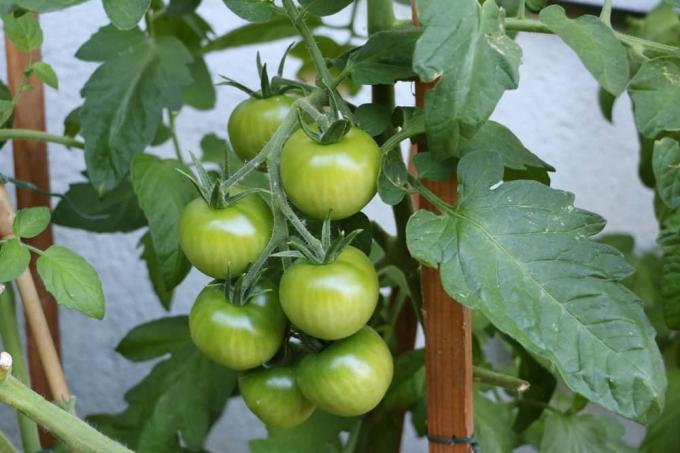
Table of contents
- The optimal time
- Sowing behind glass
- Instructions for successful breeding
- constant conditions
- proper care
- Conclusion
Tomatoes have been one of the most popular vegetables in local gardens for a little over 100 years. The vitamin-rich tomatoes have become indispensable in the kitchen. The cultivation of the tasty nightshade family has long been a tradition for many hobby gardeners. Well over 100 different varieties are available, which differ in taste, size and appearance. The sowing and cultivation of tomato plants is simple and can be implemented quickly with the right tips.
The optimal time
The nightshade family originally comes from South America. The Portuguese and Spaniards brought the tasty fruits with them to Europe from their voyages of discovery. However, the modern cultural forms have hardly anything in common with the original and wild forms of the New World. The numerous varieties of Solanum sect. Lycopersicon differ not only in flower and fruit size, but also in taste. In terms of care and location requirements, however, nothing has changed. Under certain conditions, cultivation is also possible on the balcony or terrace. the windowsill possible.
- A sunny, airy location is preferred
- Avoid drafts
- Protect from rain
- The substrate should be rich in humus and permeable
- A low lime content promotes the growth of perennials
- Fertilize regularly
In Mediterranean climates, tomato plants are perennial. In our latitudes, the intensely smelling plants are grown as annuals, the harvest takes place from July and can last until the first frost. Even single-digit temperatures are extremely hard on the sensitive South American plants. Direct sowing in the garden could only take place from mid-May, when the danger of ground frost has been averted. Due to the growing and maturing time of exotic vegetables, this late timing rarely results in a successful harvest. Temperatures above 15°C are necessary for the popular plants to thrive. To avoid this problem, you can place the plants on the windowsill or in the garden from the end of February. prefer in the warm greenhouse.
Tip:
With a little time and research, it is possible to obtain seeds from old tomato varieties. Horticultural associations and various Internet forums are an ideal contact point for such inquiries.
Sowing behind glass
For experienced tomato growers, the season begins as early as late February or early March. In order to give the young plants an optimal growth advantage, germination takes place in your own four walls or alternatively in the greenhouse. Whether aromatic cherry tomatoes or juicy beefsteak tomatoes, the varieties do not differ when sowing. The four factors heat, light, water and air play an important role in successful cultivation. The following materials are needed for sowing tomato plants:
- lean substrate
- Shallow cultivation vessel
- water atomizer

Choose the location carefully. Older specimens of Solanum sect. Lycopersicon need direct sunlight. In the seeds or UV radiation can have a negative effect on young seedlings. The substrate in the cultivation container dries out too quickly, and the small leaves are not yet able to protect themselves sufficiently from the sunlight. Choose a bright place for sowing, but protect the seedlings from direct midday sun.
Tip:
Only buy tomato varieties that are resistant to late blight and late blight.
Instructions for successful breeding
Whether the seeds of the nightshade family need to be watered before sowing divides the camps of passionate hobby gardeners into two camps. Many people swear by the fact that the germination inhibition of the seed disappears with a water bath lasting several hours. Other gardeners, on the other hand, plant the seeds without further delay and can still enjoy a good germination rate. This measure will not harm the tomato seed, so you can try it yourself. Soak the fine seeds in lukewarm water for about 3 to 4 hours.
- Fill the seed tray with lean soil
- Moisten the substrate vigorously with a water sprayer
- Sow seed in even
- A minimum distance of about 3 cm between the seeds is optimal
Solanum sect. Lycopersicon is a light germinator. For this reason, you should not cover the seed with soil. Press the fine grains only lightly into the substrate. This will prevent wind and water from clogging the seeds. To protect the soil from cooling down, you should use a simple trick: place a thick styrofoam plate under the container. This way the young seedlings don't get cold feet. Tomato seeds prefer to germinate at an ambient temperature of 20° to 24° C.
The nightshade family has an almost irrepressible thirst. This begins with the cultivation of the young plants. The soil in the pot must not dry out. A watering can should not be used when watering. Spray the substrate regularly with a water sprayer. To avoid an unpleasant surprise, you should check the moisture content of the soil daily. As soon as the seedlings are around 8 cm in size, you can use the capillary effect of the roots, in which case the water supply comes from below:
- Choose a shallow container with drainage holes for sowing
- Use a suitable coaster
- Top up the water in the saucer regularly
- The water level should be about 2 cm high
- Waterlogging must not occur
constant conditions

High humidity can prevent the germination of Solanum sect. Accelerate Lycopersicon. These conditions prevail, for example, in a greenhouse. Protected under glass, the young tomato plants thrive without being affected by ice and frost. You can also create a similar environment on the windowsill at home. The only materials you need are kebab sticks from the supermarket and clear, perforated foil.
- Stick the wooden or plastic sticks to the edge of the seed tray
- Moisten the substrate
- Stretch the perforated foil completely over the pot and the kebab skewers
To prevent mold and rot from forming in the soil, you should remove the foil for a few hours every day. This promotes the important air circulation. The improvised miniature greenhouse has served its purpose as soon as the young tomato plants touch the film with their upper leaves.
When the seedlings grow long and spindly, there is usually a lack of light. In search of light, the plants grow uncontrollably in height. The stems are then no longer able to carry the entire weight of the crop. This is unhealthy and not conducive to the further development of the nightshade family. Move the seedlings to a cooler, light location. If the light requirement at the window is not sufficient, you can fall back on special lamps from the garden trade.
Tip:
Avoid being near active radiators. Similar to direct sunlight, the substrate dries out too quickly here.
proper care
Under optimal conditions, the first green shoot tips of the nightshade plants appear after about 2 to 3 weeks. From this point on, you can literally watch the young plants grow. As soon as the plants have reached a height of about 8 to 10 cm, they need to be pricked out. Take this action in good time, before the roots of the tomato plants grow together.
- Prepare small pots
- Use humus rich soil
- Create a drain made of porous material at the bottom of the bucket
You can use a spoon to remove the seedlings from the old substrate and transfer them to the new container. Plant the tomatoes a few inches deeper into the substrate than they were previously. This prevents you from getting lost and promotes the formation of roots close to the surface. A final move to the garden is only possible from mid-May. Slowly acclimate the plants to outdoor weather beforehand.
Conclusion
Sowing and growing tomatoes is uncomplicated and can be done on the windowsill in spring without much preparation. The nightshade needs in terms of sunlight, nutrients, water and warmth are met so that passionate hobby gardeners can have a rich and tasty tomato harvest in summer receive.
 garden editorial
garden editorial I write about everything that interests me in my garden.
Learn more about tomatoes
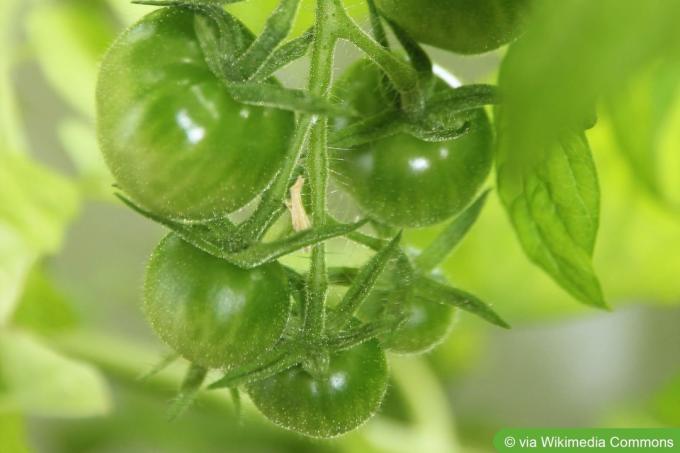
Mexican Honey Tomato: Taste & Cultivation
With the "Mexican honey tomato", hobby gardeners can bring a particularly sweet tomato variety into their garden. Due to its low acidity, it is one of the most popular sweet tomatoes and at the same time very easy to care for.
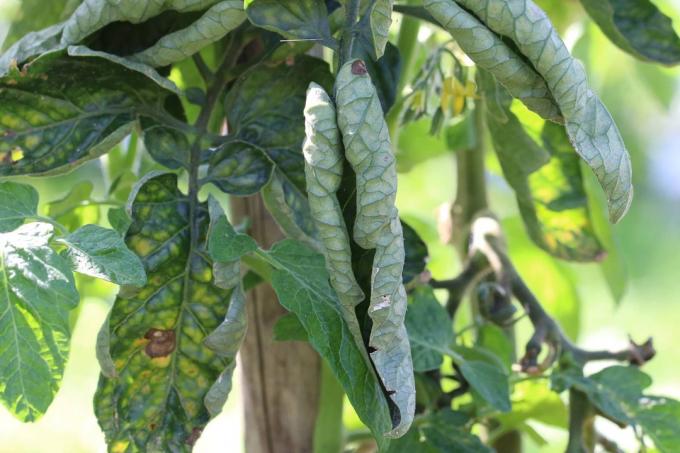
Tomato leaves curl: what to do?
There are many causes of curled leaves on tomato plants. Some are harmless, others can ruin crops. So waiting is not an option. Like a detective, you must search for clues. And then, if feasible, tailor-made countermeasures. Here's what to do when tomato leaves curl.
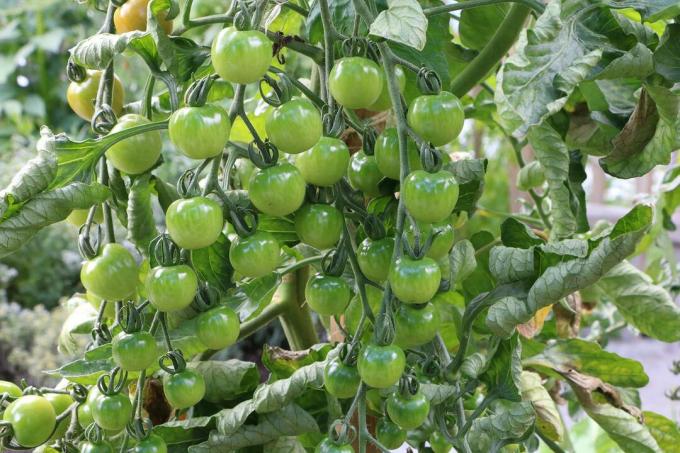
Fertilize tomatoes: how often, when and with what?
Tomatoes need a consistently high amount of nutrients for the development of flowers and fruits. In addition to choosing the right fertilizer, the amount and frequency also play an important role. All essential information for an optimal dosage can be found here.

11 resistant tomato varieties defy rain and disease
Tomatoes are considered to be relatively easy to care for, but rain and numerous diseases can bother them. Fortunately, there are numerous tomato varieties that are resistant to many dreaded tomato diseases. We present the most popular specimens in this article.
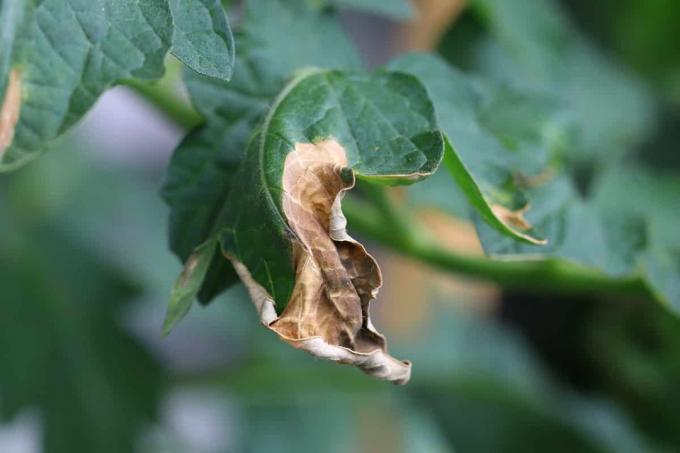
Control late blight and late blight in tomatoes
If pathogens of brown blight and late blight have settled on tomato plants, there is little hope of successful control. Home remedies and mechanical interventions only make sense in the early stages. It is all the more important that you prevent infections in a targeted manner through care measures.

How healthy are tomatoes? Information on calories, nutritional values & Co.
Snack healthy? The tomato makes it possible! Find out here why the red fruit should end up on the plate more often!



